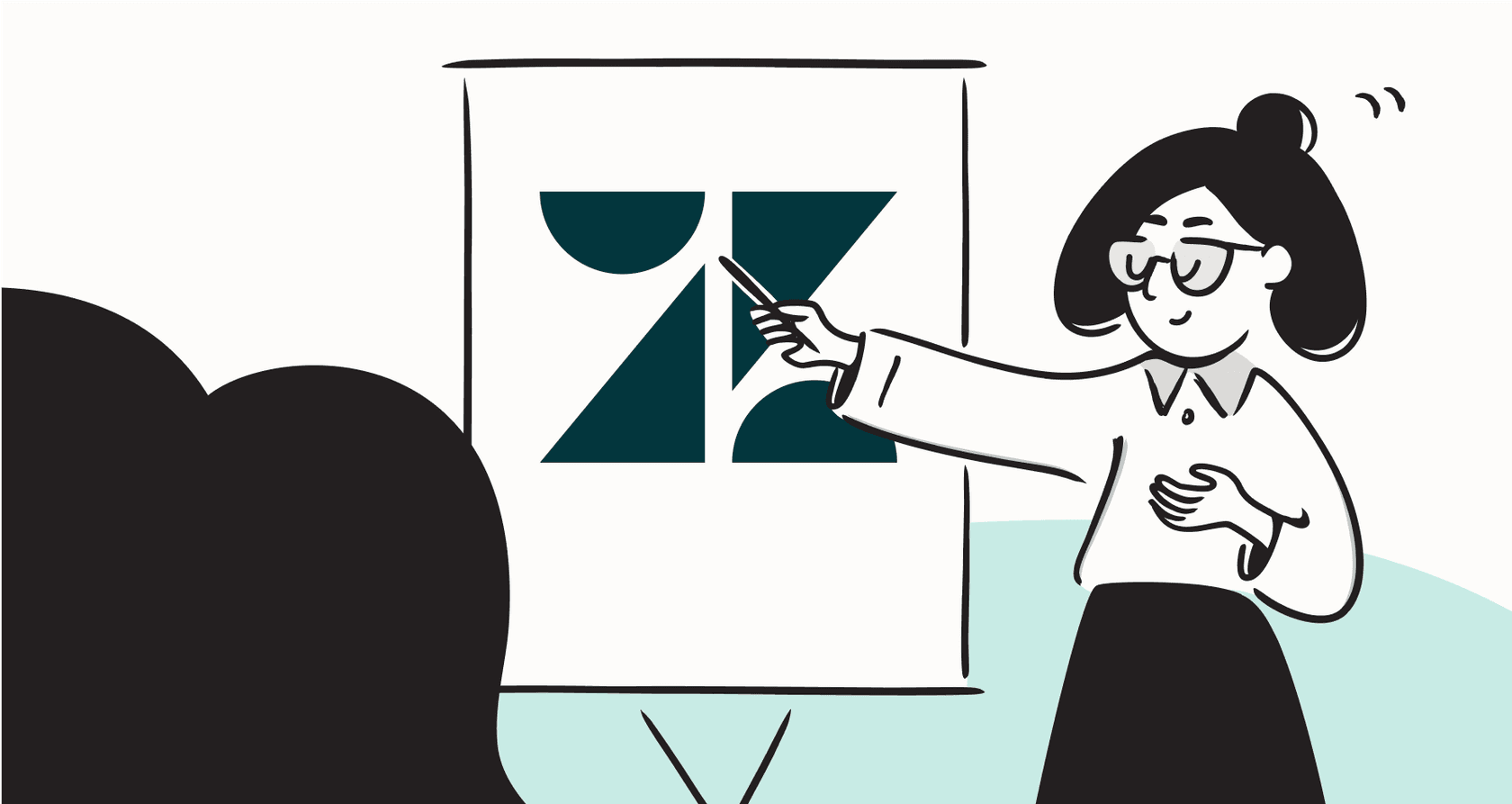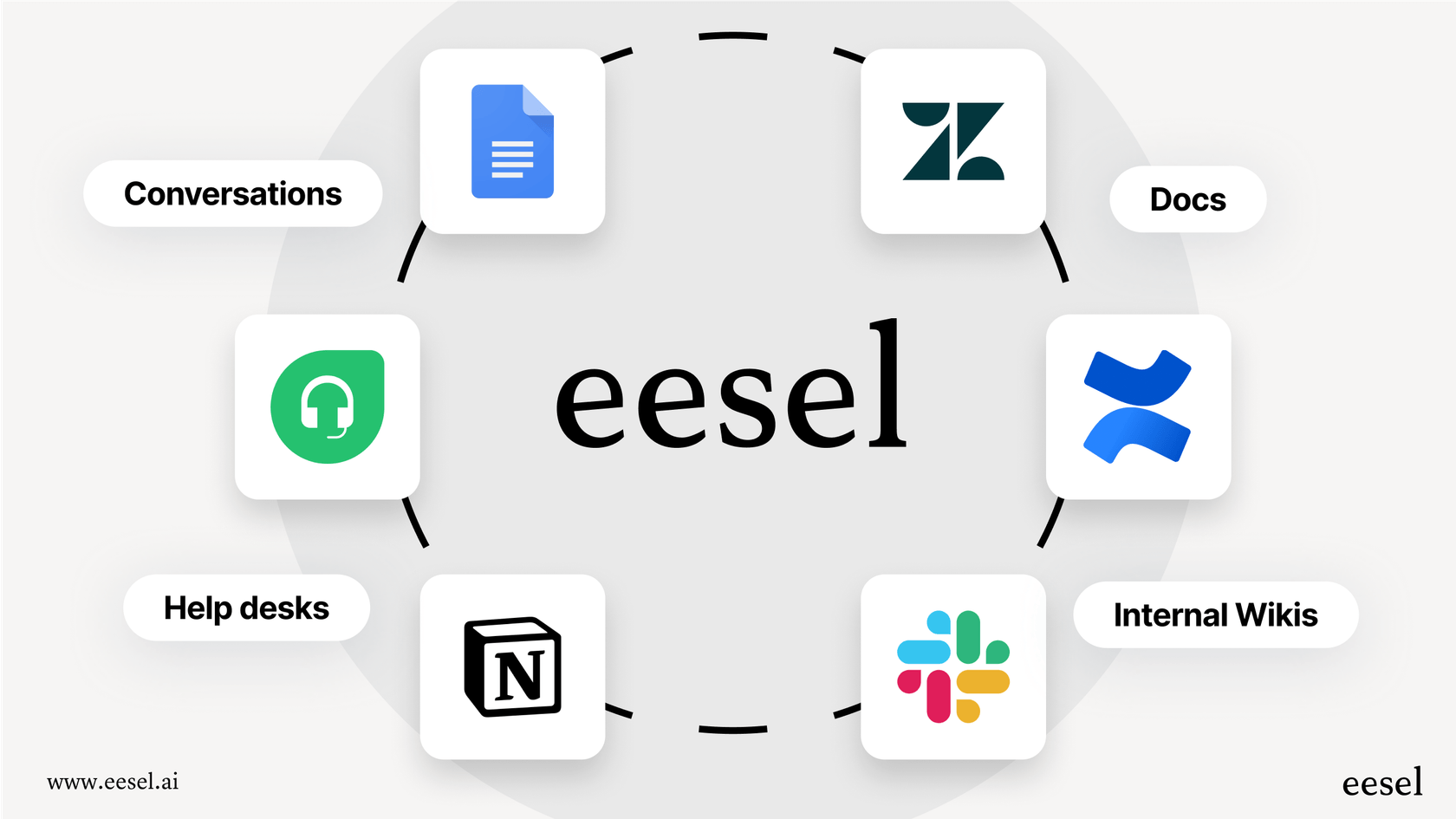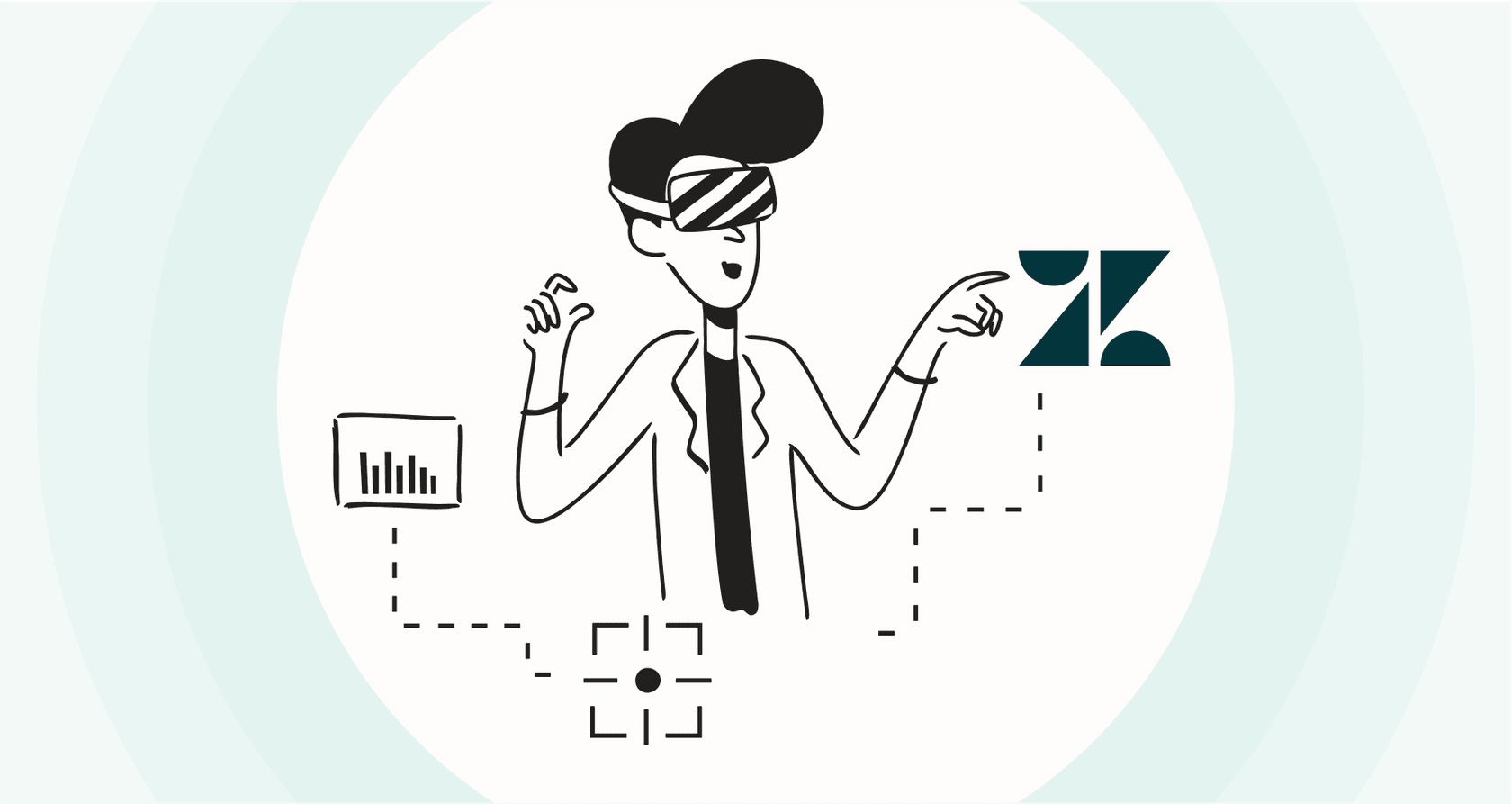Zendesk agentic AI: A guide to features, limitations & finding the right fit

Kenneth Pangan

Katelin Teen
Last edited October 8, 2025
Expert Verified

Let's be honest, working in customer support right now is tough. Customers expect instant answers, the ticket queue never seems to shrink, and every other article is talking about how AI is the magic wand that will fix everything. So it’s no surprise that big help desks like Zendesk are rolling out their own native AI tools.
But as many teams are finding out, just flipping an "AI switch" doesn't always solve the problem. If you spend any time on support forums, you’ll see people describing these built-in tools as feeling clunky or "bolted-on" rather than a smooth part of their day-to-day work.
If you’re using Zendesk, you're probably wondering if their native AI is worth it. This guide gives you an honest look at Zendesk's agentic AI, breaking down the features, the real-world limitations people are talking about, and that famously confusing pricing. Our goal is to help you figure out if it’s the best option for your team, or if a more flexible, third-party tool might be the smarter move.
What is Zendesk agentic AI?
The world of customer service is moving fast. We've gone from basic, rule-based chatbots to something much smarter. You're probably hearing two terms thrown around a lot: generative and agentic. Generative AI (think ChatGPT) is great at writing text that sounds human. Agentic AI, as Zendesk puts it, is supposed to be the next step. It doesn't just talk; it can make its own decisions, figure out the steps to solve a problem, and actually get things done on its own.
Zendesk’s AI is a set of tools built to do just that. The idea is to automate resolutions and give your human agents a helping hand. It’s all built around two main parts:
-
Zendesk AI agents: These are your digital frontline workers. They’re meant to handle entire customer conversations on their own, solving common problems by pulling from your knowledge base, 24/7.
-
Zendesk copilot: This is more of an assistant that works right alongside your human agents. It sits in the agent workspace and helps with things like summarizing long ticket threads, suggesting what to write back, or even changing the tone of a message.
These tools are baked directly into the Zendesk platform, promising a smarter, more efficient way to handle support from the inside out.
A deep dive into Zendesk's AI features
On paper, Zendesk's AI suite looks like it covers all the bases. It’s meant to help with everything, from the second a ticket lands in the queue to the moment it’s marked "solved." Let's break down what Zendesk says it can do.
AI agents for automated resolutions
The big promise here is resolving common customer questions without a human ever getting involved. Zendesk claims its AI agents can handle over 80% of interactions on the spot, freeing up your team to tackle the truly tricky stuff.
These bots come "pre-trained" for industries like retail, finance, and software, which should give them a running start at understanding what your customers are asking for. They’re also designed to work on all your channels, messaging, live chat, email, so your customers get the same experience no matter how they contact you.
Copilot for agent productivity
While the AI agents for automated resolutions are out there handling the simple tickets, the Zendesk copilot is supposed to be your human team’s secret weapon. The goal is to make every agent as good as your very best one by taking care of the tedious work.
Here’s what it does:
-
Summarization: When an agent opens a ticket with a mountain of back-and-forth messages, the copilot can create a quick summary so they can get up to speed without reading every single word.
-
Tone shift: An agent can type out a quick, functional reply, and the AI can tweak it to sound more formal or friendly, keeping your brand voice consistent.
-
Suggested replies: The copilot can draft responses based on your help center articles and old tickets, giving your agents a good starting point instead of a blank page.
-
Proactive assistance: It tries to go a step further than just writing text by suggesting what an agent should do next to solve the issue.
AI-powered admin and knowledge tools
Zendesk’s AI also has a few tricks up its sleeve for managers and admins working behind the scenes.
-
Intelligent triage: This feature automatically reads incoming tickets, figures out the customer's intent and sentiment, and routes the ticket to the right person or department.
-
Knowledge base generation: Instead of writing help articles from scratch, you can feed the AI a few bullet points or an old document, and it will spit out a polished help center article.
-
AI insights: You get dashboards that show you how your AI agents are performing and help you spot trends in what customers are asking about, so you can make smarter decisions.
The real-world limitations of Zendesk's agentic AI
While the feature list sounds pretty great, the day-to-day reality for many users doesn't quite match the marketing pitch. Like with any platform that adds AI as an afterthought, you often lose a bit of flexibility and the user experience can feel a bit off. When you dig into what actual users are saying, a few common frustrations pop up.
It depends on a perfect knowledge base
One of the biggest hurdles teams face is that Zendesk's AI is completely dependent on your knowledge base being perfectly organized and up-to-date. <quote text="One Reddit user, "ToastBix," put it bluntly, saying that if the answer isn't in a neat little KB article, the AI "tends to struggle."" sourceIcon="https://www.iconpacks.net/icons/2/free-reddit-logo-icon-2436-thumb.png" sourceName="Reddit" sourceLink="https://www.reddit.com/r/Zendesk/comments/1ic53my/zendesk_ai_agents_after_thought/"> This puts a ton of pressure on your team to constantly write, update, and polish your documentation.
But let’s be real, company knowledge is rarely that neat. That’s where modern AI solutions need to be more adaptable. For example, eesel AI is built to learn from your company's actual, messy reality. It doesn't just look at your pristine help center; it connects to all the places your knowledge lives, past tickets, internal Google Docs, and Confluence pages, to find the right answer.
 This infographic shows how eesel AI connects to various knowledge sources, overcoming a key limitation of Zendesk's AI. A good visual for explaining the Zendesk agentic AI features limitations and finding the right fit for support.:
This infographic shows how eesel AI connects to various knowledge sources, overcoming a key limitation of Zendesk's AI. A good visual for explaining the Zendesk agentic AI features limitations and finding the right fit for support.:The user experience feels clunky and "bolted-on"
Another frequent complaint is that the AI just doesn't feel like a natural part of the Zendesk workflow. The original poster on that same Reddit thread mentioned having to open a separate "Intelligence" panel just to see a ticket summary and called the process for building an answer flow "the most annoying interface in the world."
Another user, "MammothManMike," chimed in, saying Zendesk is "failing pretty hard to actually make AI feel like an organic part of the support process." This is a classic problem when older platforms try to shoehorn in new AI features. In contrast, tools like eesel AI are designed to sit seamlessly on top of the help desk you already use. You can integrate with Zendesk in one click, improving your workflow instead of forcing you into a new, awkward one.
 This screenshot shows the eesel AI Copilot drafting a response within a help desk, illustrating a seamless workflow. This helps in understanding the Zendesk agentic AI features limitations and finding the right fit for support.:
This screenshot shows the eesel AI Copilot drafting a response within a help desk, illustrating a seamless workflow. This helps in understanding the Zendesk agentic AI features limitations and finding the right fit for support.:Lack of good testing and rollout controls
Letting an AI talk to your customers is a pretty big deal, and you definitely don't want to do it blind. Unfortunately, Zendesk’s tools don't have a solid simulation mode, which makes it nearly impossible to know how the AI will perform or what its resolution rate will be. You're basically forced to test it live on your customers, which is a recipe for a bad experience if the bot isn’t ready.
You need to feel confident before you automate. That's why eesel AI gives you a powerful simulation mode that lets you test your setup on thousands of your own past tickets. You can see exactly how the AI would have answered, get solid predictions on resolution rates and cost savings, and tweak its behavior before it ever speaks to a real customer.
 The eesel AI simulation dashboard, which allows teams to test AI performance before going live, a key differentiator when considering Zendesk agentic AI features limitations and finding the right fit for support.:
The eesel AI simulation dashboard, which allows teams to test AI performance before going live, a key differentiator when considering Zendesk agentic AI features limitations and finding the right fit for support.:Finding the right fit: Zendesk's native AI vs. a third-party tool
So, how do you decide? Should you stick with Zendesk's native AI or look elsewhere? It really boils down to your team's needs, where your company knowledge currently lives, and how much control you want over your automation.
Here’s a quick table to help you think it through:
| Consider Zendesk's native AI if... | A tool like eesel AI might be a better fit if... |
|---|---|
| Your knowledge is already neat, tidy, and lives entirely in the Zendesk Help Center. | Your team's knowledge is spread out across Google Docs, Confluence, past tickets, and Slack. |
| You're all-in on the Zendesk ecosystem and prefer to get everything from one provider. | You want a flexible tool that plugs into your help desk in minutes, no "rip and replace" needed. |
| Your automation needs are pretty standard and fit well with Zendesk's pre-made workflows. | You need fine-grained control to customize the AI's actions, personality, and when it should (and shouldn't) automate. |
| You're okay with testing and tweaking the AI live with your customers. | You want to test everything thoroughly in a safe simulation mode before you launch. |
| Your budget works with a per-agent pricing model that grows as your team does. | You prefer simple, predictable pricing without being charged for every single resolution. |
Zendesk's native AI can work for teams who are deep in its ecosystem and have already put in the work to build a perfect knowledge base. But for teams that need more flexibility, more control, and an AI that can learn from how their company actually works, a specialized tool like eesel AI is almost always a better bet.
A complete breakdown of Zendesk's AI pricing
Price is obviously a huge piece of the puzzle, and Zendesk's model can be surprisingly tricky to navigate. The AI features are often bundled into their more expensive plans, but the really useful stuff comes as pricey add-ons.
Here are the base Zendesk Suite plans that include their "Essential" AI agents:
-
Suite team: $55 per agent/month (billed annually)
-
Suite professional: $115 per agent/month (billed annually)
-
Suite enterprise: $169 per agent/month (billed annually)
But the costs don't stop there. The most important AI tools are sold separately:
-
Copilot: This agent-assist tool is an add-on. Users report it costs around $50 per user, per month. And here's the kicker: that cost often applies to all of your agents, even if they barely use it.
-
Advanced AI agents: If you want the AI to handle more complex, multi-step problems, that's another add-on.
-
Automated resolutions (ARs): Zendesk also charges you for every ticket the AI successfully solves. Their pay-as-you-go rate is $2 per resolution, which can lead to some scary, unpredictable bills if you have a busy month.
All these different charges can make budgeting a real headache. In contrast, eesel AI's pricing model is designed to be simple and predictable. You pay a flat monthly fee for a certain number of AI interactions, not a per-agent or per-resolution fee. This means you don't get punished for growing your team or having a successful month where you deflect a lot of tickets.
 A screenshot of eesel AI's pricing page, which offers a clear and predictable model compared to the complexity of Zendesk's pricing. Important for those researching Zendesk agentic AI features limitations and finding the right fit for support.:
A screenshot of eesel AI's pricing page, which offers a clear and predictable model compared to the complexity of Zendesk's pricing. Important for those researching Zendesk agentic AI features limitations and finding the right fit for support.:The verdict: Is Zendesk's native AI right for you?
Zendesk's native AI offers a solution that's tightly woven into its platform, which is convenient for teams who are already all-in. But that convenience comes at a cost, you give up flexibility, a better user experience, and predictable pricing. You're basically trading the power and control of a specialized tool for the simplicity of sticking with one vendor.
For teams that need an AI that can learn from all their scattered knowledge, gives them a safe way to test before launch, and offers total control over automation, a tool built specifically for those needs is the clear winner.
If you're looking for an AI solution that fills the gaps Zendesk's native tools leave behind, you should check out eesel AI. You can connect it to Zendesk in a few minutes, train it on all your company docs, and run simulations to see how it will perform before it ever goes live. It’s the powerful, flexible, and user-friendly AI that support teams have been looking for.
Frequently asked questions
Zendesk Agentic AI aims to automate customer resolutions and assist human agents through AI agents and a Copilot. This blog explores its capabilities, common challenges like reliance on perfect knowledge bases, and helps assess if it's the right fit for your support team's specific needs and existing infrastructure.
Zendesk's AI offers automated resolutions via AI agents handling interactions across channels, and a Copilot that aids human agents with summarization, tone shifting, and suggested replies. It also includes intelligent triage for tickets and knowledge base generation for admins, aiming to cover various aspects of customer support.
Practical limitations include a heavy dependence on a perfectly organized knowledge base, a user experience that many find "bolted-on" and clunky, and a lack of robust testing and rollout controls. These can make live implementation risky and hinder the AI's effectiveness in real-world scenarios.
A perfectly organized and up-to-date knowledge base is critically important for Zendesk's AI. The system tends to struggle significantly if answers are not neatly presented in KB articles, meaning teams must invest considerable effort into maintaining pristine documentation for the AI to perform effectively.
Zendesk's AI features are often bundled into their more expensive base plans, but key tools like Copilot and advanced AI agents are pricey add-ons, frequently charged per agent. Additionally, they charge a pay-as-you-go rate for each automated resolution, which can lead to unpredictable and potentially high monthly bills.
A third-party AI solution like eesel AI might be more suitable if your company knowledge is dispersed across various platforms (e.g., Google Docs, Confluence) beyond a pristine help center. It's also preferable if you need more flexibility, fine-grained control over automation, robust simulation testing capabilities, and a simple, predictable pricing model.





